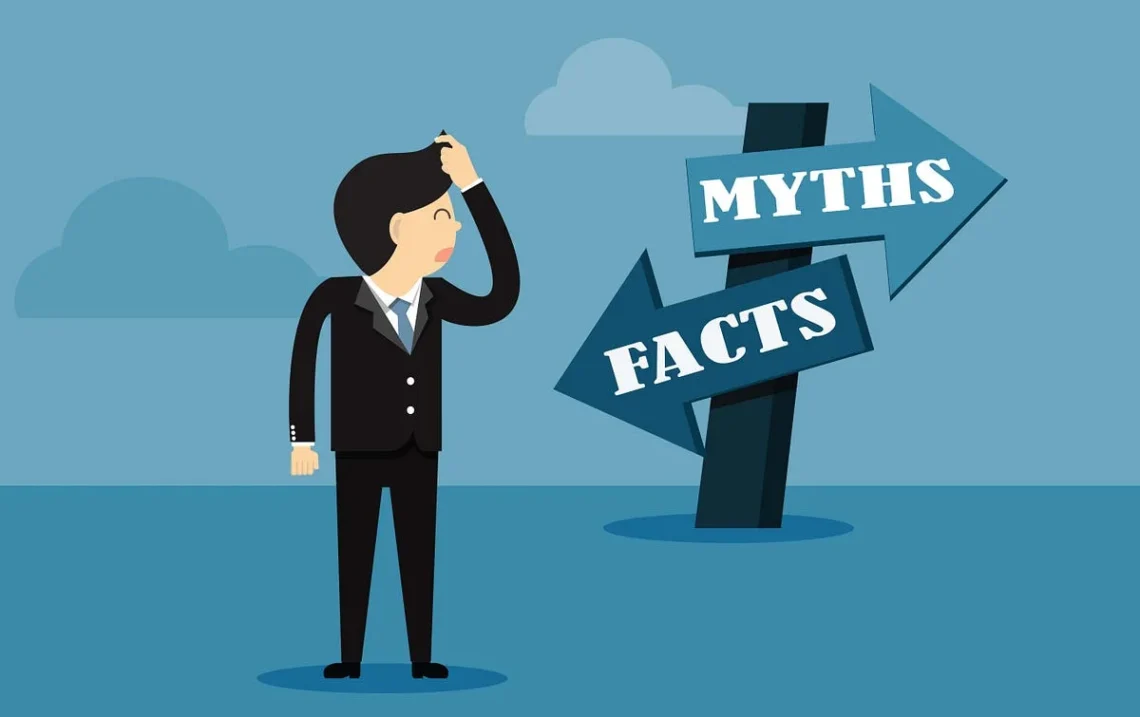1. Understanding who Billy N is and his connection with Alcoholics Anonymous
Billy N Myths and Misconceptions of AA: Billy N has emerged as a recognised speaker within the AA community, notably presenting a session titled “AA Myths & Misconceptions” at the 2017 Unity & Service Conference. While not one of the founding members of Alcoholics Anonymous (AA), his work has focused on clarifying misunderstandings about the fellowship.
To set the stage: AA itself is a global, peer-led mutual-aid fellowship for those who identify as alcoholics and seek to recover with peer support and abstinence-based recovery. Billy N’s relevance arises from his practical experience in recovery and work with AA-style meetings and conventions. His talks often aim at demystifying key traditions, steps, and common misconceptions that many newcomers and even long-time members may hold.
In short, Billy N acts as a bridge between myth and clarity for AA: using his own recovery story and speaker platform to tackle false ideas, assumptions and half-truths. If you’ve ever felt confused by what AA is or isn’t, his voice offers one accessible viewpoint.
2. The founding principles of AA: what you need to know
Before diving into myths and misconceptions, it’s helpful to ground ourselves in what AA really stands for. Understanding the core principles makes it easier to spot where misconceptions creep in.
2.1 Fellowship and shared experience
AA is, fundamentally, a fellowship—members share their experiences, strengths and hopes with each other so they may recover from alcoholism. The emphasis is on personal stories, peer support, and mutual help rather than formal therapy or professional treatment.
2.2 Abstinence-based recovery
A key foundational point: AA holds to an abstinence programme for alcohol—meaning that the goal is to stop drinking altogether, rather than controlled or moderated drinking. This distinguishes AA from some other approaches.
2.3 The Twelve Steps and Twelve Traditions
The Twelve Steps address personal recovery (e.g., admitting powerlessness, making amends, spiritual awakening), while the Twelve Traditions govern the fellowship (e.g., group autonomy, anonymity, non-professional status). Billy N, in his podcast, emphasises how newcomers often have questions about authority, finances and belief in God via the Traditions.
2.4 Anonymity and non-professional nature
AA is not a professional treatment centre. It is peer-led. Anonymity is one of its pillars: members may share first names only, avoid promoting themselves, and the organisation itself remains non-promotional.
By getting clear on these principles, we create a strong baseline for identifying where myths originate and why they persist.
3. Common myths about AA
Now that we’ve set what AA is, let’s look at six of the most pervasive myths. Many of these are addressed in Billy N’s “Myths & Misconceptions” presentation.
Myth 1 – “AA is just a religious club”
One of the most frequent misconceptions: that to attend AA, you must subscribe to a particular religion or literally believe in God. In reality, AA is spiritual, not religious-dogmatic. While the Steps refer to a “Higher Power”, AA welcomes diverse beliefs including atheists and agnostics. Billy N himself notes that newcomers often ask: “Do I have to believe in God?” and the answer is: you need only a willingness to believe in some power greater than yourself or a willingness to open up to change.
Myth 2 – “AA only works for ‘hopeless cases’ or people with decades of drinking”
Some believe that AA is only for the very worst cases of alcoholism, or for people who have “hit rock bottom”. The truth: AA is open to anyone who has the desire to stop drinking. Early engagement often leads to better outcomes. AA’s literature emphasises any tenure of drinking, not only the extreme. Still, cultural belief prefers the dramatic narrative, which can mislead people into thinking they’re “not bad enough” to join.
Myth 3 – “AA means no individuality — everyone must follow a rigid programme”
Another misconception: that joining AA means losing all agency and simply following a rigid set of rules. While the Twelve Steps do provide a structure, AA encourages personal growth, sponsorship, and applying the Steps in one’s own way. Billy N highlights that the traditions allow “group autonomy” — meaning your meeting may have its flavour, but core principles remain.
Myth 4 – “If I join AA, I’ll have to stop associating with all my old friends and hobbies”
Often people fear that sobriety means a complete lifestyle overhaul, losing all former friends and interests. While some change is likely, many members keep meaningful relationships and hobbies — the shift is more about balancing than discarding entirely. The myth exaggerates the required sacrifice.
Myth 5 – “AA is a cult”
Because of labels like fellowship, sponsorship, steps and spiritual language, some critics sensationalise AA as a cult. But this is misleading: AA is voluntary, non-hierarchical, and each member chooses their own path. No central authority dictates beliefs. The anonymity and sponsorship system are peer-support tools, not mechanisms of control. Billy N’s talk on myths seeks to clarify this exact point.
Myth 6 – “Only drinking matters — other addictions don’t count in AA”
People sometimes assume AA is strictly for people whose primary problem is alcohol, and that other addictions are irrelevant. While AA is specifically for alcoholism, the core principles of recovery translate widely; many related fellowships (e.g., Narcotics Anonymous) utilise similar structures. This misconception can discourage people whose main issue is, say, prescription drugs or behavioural addiction from exploring recovery options.
By naming these myths, we strip away the misconceptions and make the real path clearer.
4. Misconceptions specifically about Billy N and his message
Since Billy N has become a recognizable voice in the recovery community, there are also misconceptions about him and his approach. Let’s address a few.
4.1 “Billy N is a founder of AA or official leadership”
A mistaken assumption: because he speaks and is widely downloaded, some believe Billy N was a co-founder of AA or holds an official leadership role. He does not. The founders of AA are Bill W. and Dr Bob S.. Billy N is a speaker and recovery advocate. He uses his experience to clarify myths — but he is not part of AA’s governing body.
4.2 “His message replaces the official AA programme”
Another misconception: that Billy N’s interpretation is somehow a new or alternative version of AA. In fact, his message complements rather than replaces the official programme. His focus is on misconceptions rather than rewriting AA’s fundamental steps or traditions.
4.3 “If you don’t agree with Billy N, you’re not ‘doing AA right’”
Because his recordings and workshops are popular, some newcomers feel that to follow AA “correctly” they must adopt his language or style. This is not true. AA emphasises group autonomy and personal application. Billy N offers interpretation and guidance, but AA welcomes many voices and styles.
4.4 “Billy N’s audience are only newcomers or weak members”
Sometimes his accessible, informal style leads to the idea that his content is only for newcomers or “less serious” members. Contrary to that, his myth-busting and insights are valuable for both new and long-time members who may still hold unexamined assumptions.
By unpacking these misconceptions, we ensure that Billy N’s work is seen in proper context: respected, but not authoritative in place of official AA literature and practice.
5. The real purpose and power of AA meetings, and how myths obstruct access
One of Billy N’s central points is how misconceptions create barriers. If someone believes the myths, they might never walk into a meeting. Let’s look at what AA meetings are really for, and how myths get in the way.
5.1 What happens in an AA meeting
-
A safe, welcoming environment where members share personal experience.
-
Promises of anonymity — what’s shared stays within the room.
-
Focus on the Steps (some meetings) or Topics (others).
-
Sponsorship offered: one alcoholic helping another.
-
No dues or fees; self-support through voluntary contribution.
AA meetings represent community, support, and shared hope. The power lies not only in abstaining from alcohol but in building a new way of living.
5.2 How myths obstruct access
-
If someone believes “you must believe in God”, they may stay away.
-
If someone says “I’m not terrible enough”, they stay away.
-
If someone fears cult-like control, they withdraw.
These myths prevent people from even trying AA, which may be the one thing that helps them. Billy N emphasises: “It’s not about perfection; it’s about willingness.”
5.3 Why meetings are more powerful than one-on-one therapy alone
While therapy and counselling have their roles, AA meetings add peer support and a community of lived experience. Seeing someone else who has been there — sharing their truth — gives hope, and hope is a critical ingredient of recovery. Billy N often points to the “miracle of connection” — when a newcomer realises they are not alone.
5.4 The role of service and giving back
A powerful feature of AA is service — helping others as part of one’s recovery. This involvement strengthens one’s own sobriety and purpose. Misconceptions sometimes lead people to think service is optional or wholly altruistic; in reality it’s integral to the recovery identity.
By clarifying these purposes and pointing out how myths deter participation, Billy N’s message helps unlock the potential of what AA offers.
6. Breaking the stigma: modern views on AA and why clarification matters
In today’s world—where addiction is being viewed more as a health issue than a moral failing—the role of AA continues to evolve. Billy N’s myth-busting talk is timely because the stigma around alcoholism and recovery persists.
6.1 Changing perceptions of alcoholism and recovery
Historically, alcoholism was a source of shame; entering AA was often a last resort. Now, more people recognise that addiction is a disease, and recovery is possible. AA’s global reach—active in 180+ countries with nearly two million members—shows its staying power. Clarifying myths means more people will access support sooner, which improves outcomes.
6.2 The benefit of transparency and myth-busting
When people believe myths, they either delay or avoid recovery altogether. Having speakers like Billy N openly address “what people really think” allows normalising of recovery, reduces fear, and increases inclusion. For example: reaffirming that you don’t have to “hit rock bottom” to join.
6.3 Why AA remains relevant in the digital age
Though many other recovery models exist, AA has adapted: online meetings, podcasts, global access. Billy N’s podcasts (such as his talk on the Twelve Traditions) illustrate how modern voices are using new platforms. The myths he addresses – around belief, identity, hierarchy – continue to matter in this new context.
6.4 How you can engage with AA and Billy N’s content
-
Attend a local AA meeting and observe for yourself.
-
Listen to Billy N’s sessions (e.g., “AA Myths & Misconceptions”, session from 2017).
-
Reflect on your own beliefs: Are you holding assumptions that stop you from getting help?
-
Share what you learn—recovery is a team sport.
Breaking down the stigma means making recovery accessible to everyone who wants it, not just those who fit a preconceived mould.
Conclusion
In summary, Billy N’s work in addressing myths and misconceptions of AA is crucial. By understanding who he is, what AA truly stands for, what the common myths are, and how they hinder access, we empower ourselves and others to make informed decisions about recovery. If you’ve ever felt uncertain about AA—because of a belief you must be “rock bottom”, or that AA is only for the very worst cases—then exploring these misconceptions may be your first step. And remember: recovery is about willingness, community, and shared hope.
FAQs
-
Do I need to believe in God to join AA?
No. AA uses the term “Higher Power” which can be interpreted in many ways. AA welcomes atheists, agnostics and a variety of beliefs. -
Is Billy N a founder or official leader of AA?
No. He is a speaker and recovery advocate who gives presentations on AA topics such as myths and misconceptions. -
If I join AA, will I have to follow a rigid regime and give up all my old life?
Not exactly. While change is part of recovery, AA encourages personal growth and maintaining positive relationships and interests; it’s not about abandoning all you were, but building a sustainable new way of living. -
Is AA only for “hopeless” alcoholics or those who have tried everything else?
No. Any person who has the desire to stop drinking is welcome. AA does not require you to have failed elsewhere first. -
How can I know whether I’m falling into a myth or reality about AA?
A good gauge: if you believe something about AA that makes you afraid or excluded, it’s worth asking whether it’s a myth. Attend a meeting, listen to a speaker like Billy N, read official AA literature, and compare.





